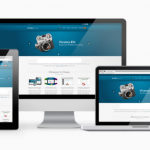7 Startup Business Pitfalls and How to Avoid Them
 Bob had a great idea for a t-shirt business. His design ideas were killer; he just knew the kids would love them. The stores would be clamoring to take them. He was ready to go into mass production, right now! Well, I hate to rain on anyone’s parade or dampen their enthusiasm, but it seemed he hadn’t thought it through. We started asking him some routine questions about his research, his target audience, his profit margins and so on, and he realized he didn’t have a lot of the answers. He went off to do a bit more research – and we never heard anything further about the t-shirts.
Bob had a great idea for a t-shirt business. His design ideas were killer; he just knew the kids would love them. The stores would be clamoring to take them. He was ready to go into mass production, right now! Well, I hate to rain on anyone’s parade or dampen their enthusiasm, but it seemed he hadn’t thought it through. We started asking him some routine questions about his research, his target audience, his profit margins and so on, and he realized he didn’t have a lot of the answers. He went off to do a bit more research – and we never heard anything further about the t-shirts.
A sad story? Sure. But not as sad as if he had invested thousands, or even tens of thousands, in a business that just wasn’t thought through.
Many of our clients are startup businesses, and we love dealing with them. Their enthusiasm and optimism are infectious, and we enjoy helping them to develop a unique brand image, websites, and promotional items. Many enjoy great success, but unfortunately, some of them fail, and it’s always heartbreaking to see, particularly when they’ve put so much effort and passion into it.
More than half of new startups fail in the first four years often due to easily avoidable pitfalls. Here are a few of the things we’ve noticed over the years that are critical to the success or failure of any new venture.
1. You love your product, but will anyone else? One client had a wonderful family recipe and was ready to mass-produce it and get it into supermarkets. Her family and friends all loved the recipe, so how could it fail? Well, it might be the most amazing product ever to come along, but you won’t know its appeal for sure until you test it – beyond your immediate circle. There’s no substitute for hands-on research and testing. Take some samples to local stores and see if they are interested. Take samples to a local street fair or market and see if anyone wants to buy. Test market it at a store or two before you get into a national launch.
The author William Faulkner advised writers to “kill your darlings.” Don’t be so in love with your own ideas that you fail to see the flaws. It’s fine to be passionate and enthusiastic about your ideas, but be ready to turn around and look at them critically and objectively. And be ready to hit the street and do a lot of talking, selling, surveying, and listening before you decide that your idea has “legs.”
Pat Flynn has some great suggestions on simple, inexpensive product research.
2. Your target audience – who are you trying to reach? Too many neophyte marketers don’t pay enough attention to this factor, yet it’s one of the most basic and far-reaching factors in selling anything. You have to know exactly what type of people you are trying to sell to and you have to know that target consumer very well – age, gender, education level, income, location and so on. Any product has specific types of people that are most likely to need or want it.
And once you’ve determined your target public, well, do you know anything about them? Let’s say it’s teenagers. Have you actually talked to teenagers? Have you shown them your product? Do they like it? What changes would they make in it? There’s no substitute for hard-boiled research. Your product has to solve a problem or fill a need for your target audience. You may find that what you thought was a great idea for teenagers, is nothing a teenager actually would buy!
3. Pricing – can you make a profit? Sales volume alone doesn’t equate to profit. One business we worked with was making over $20,000 a week in sales, yet was losing money and headed for bankruptcy. A basic profit and loss workout showed that they would have to drastically cut their overhead to actually be profitable, which they did, and they were able to move into the black.
In another case, an artist was selling her work for ridiculously low prices despite a popular demand for her work. When she added up her expenses and how many hours spent on each piece of artwork, it became obvious that she’d have to charge more to avoid being a “starving artist.”
4. Thinking it through. Take the time to think through your business idea in all of its details. Have you added up all the costs of getting your idea off the ground? Have you worked out how long it will take? Have you worked out all of the sales or distribution points you will need? Have you talked to people in that business and gotten their input? Have you detailed out every step so you know exactly what you have to do, step by step, with no fuzzy or grey areas?
One of our now long-time loyal clients originally contacted us for a full branding package for a new product: logo, website, label, packaging, brochure…the works. During our initial phone call, we asked some pointed questions: “Do you have a business plan we can look at?” “Have you done any market research?” “Have you done any product testing?” “Who is your target public?” The client realized she didn’t have the answers. So instead of selling her an expensive branding package and promotional items, we gave her the number of the local Small Business Administration, suggested she contact a competent attorney, and made some suggestions for product testing. Sure, it took some months, but when we did hear back, she was now on firm footing – and we had made a client for life.
It doesn’t hurt to do a proper business plan. There are plenty of online tutorials that walk you through the process, and your local Small Business Administration has people that can advise you, often for free. Going through the steps of a business plan can help you to clarify your goals and fine-tune your approach – and make sure you haven’t missed anything.
5. Start small and build it up. It’s fine to dream big, but to avoid wasting a lot of money and time, start small. Let’s say you have a great idea for a gadget that’s going to take the world by storm. Your impulse may be to set up a gadget manufacturing facility, print up a lot of literature, produce a big trade show booth and a complex e-commerce website. Well. Maybe it will work and maybe it won’t – and if it doesn’t, you’ve wasted a lot of time and money.
Why not start small and build it up? Take your gadget around to some shops and see if there’s a demand for it. Rent a small booth at a trade show and test it out. Set up a simple website and test out ways to drive business to it. There are many ways, particularly in the internet age, to test out your product offering on a smaller scale.
6. Invest in what matters. A fancy office with a big desk and a receptionist might not be a smart investment for a startup. A full image branding package or a complex website might not be the first things you’d invest in. But certainly you should take care to present a professional public face. It might make sense to have a decent logo and business card. If you’re offering a retail product, it might pay off to put some attention on your packaging.
There are many things you can change and adjust later, but people’s first impressions can be critical.
7. Test, review, adjust. There is much to be said for following your vision, sticking to your guns and not compromising. But there is also a time for humility if your original idea doesn’t work. Be willing to constantly test and adjust your idea as time goes on to improve it. You can never know all of the factors when you’re starting out. You learn as you go, and you have to be willing to adjust your ideas, your product and your sales approach to meet new conditions.
What have your experiences been with startup businesses?





